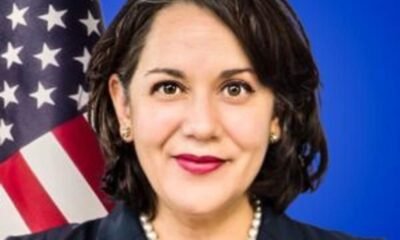INTERNACIONAL
White House rips alleged Pentagon leakers’ ‘shattered egos,’ brushes off Hegseth second Signal chat report
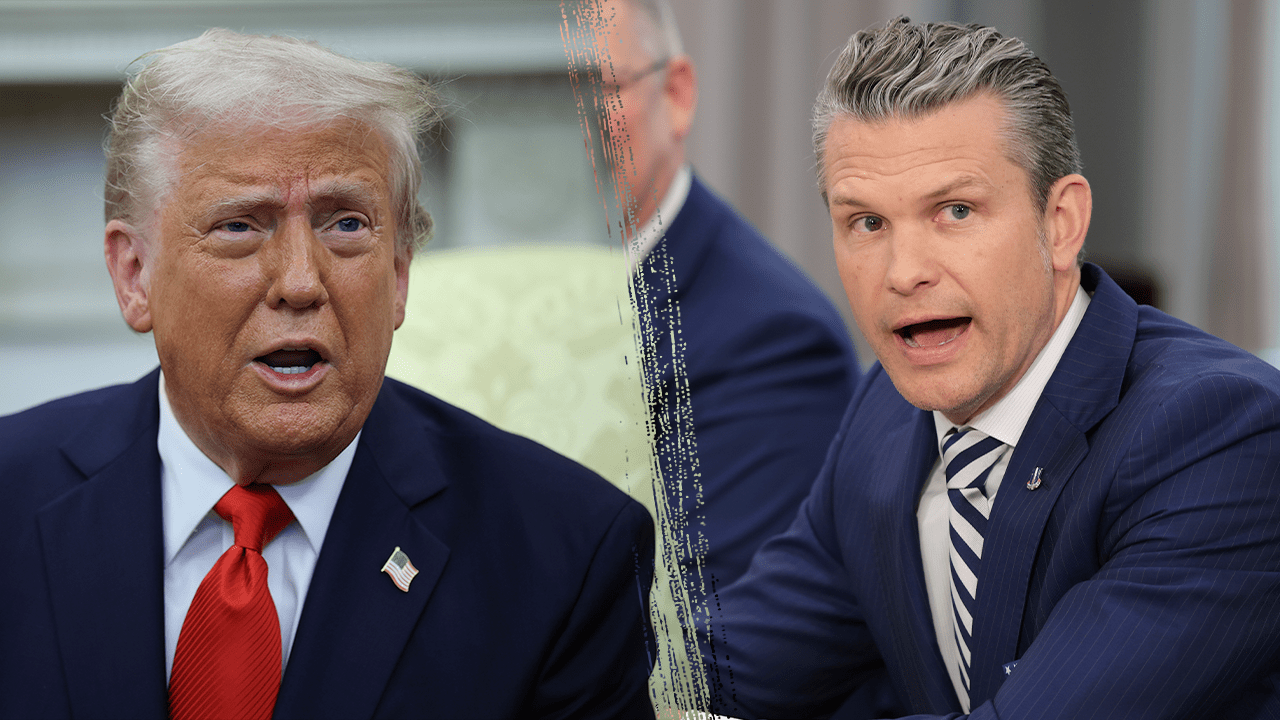
The White House hit back at recent news reports detailing Secretary of Defense Pete Hegseth’s reported involvement in a second Signal group chat where he discussed military strikes on Yemen as a «nonstory» while also slamming recently fired Department of Defense staffers.
«No matter how many times the legacy media tries to resurrect the same nonstory, they can’t change the fact that no classified information was shared,» White House spokeswoman Anna Kelly told Fox News Digital Monday morning. «Recently fired ‘leakers’ are continuing to misrepresent the truth to soothe their shattered egos and undermine the President’s agenda, but the administration will continue to hold them accountable.»
Kelly’s response followed Fox News Digital inquiring about media reports Sunday reporting that Hegseth was part of another Signal group chat that allegedly included his wife, personal attorney and brother where he discussed upcoming military strikes on Yemen. The chat was reportedly created by Hegseth, the New York Times reported Sunday, citing four people will knowledge of the chat.
Hegseth also brushed off the reporting on the Signal chat Monday, blaming it on «disgruntled employees» and «anonymous smears.»
PENTAGON’S WEEK OF POWER STRUGGLES: LEAK FALLOUT AND SHOUTING MATCHES HIT HEGSETH’S INNER CIRCLE
Secretary of Defense Pete Hegseth has yet to respond to the post on X. (Franco Brana/AFP via Getty Images)
«This is why we’re fighting the fake news media,» he said when pressed on the chat by reporters at the White House Easter Egg roll. «This group right here is full of hoaxsters.»
Hegseth gestured to his wife and children and said he was there to enjoy the day with them. He added that he had spoken to Trump and planned to keep fighting all the way.
The Trump administration came under scrutiny from Democrats and other critics after the Atlantic’s editor-in-chief, Jeffrey Goldberg, revealed in an article published March 24 that he was added to a Signal group chat with top national security leaders, including Hegseth, National Security Advisor Mike Waltz and CIA Director John Ratcliffe, discussing upcoming military strikes in Yemen.
PENTAGON FIRES GREENLAND US BASE COMMANDER WHO ‘UNDERMINED’ JD VANCE AFTER PITUFFIK VISIT
Signal is an encrypted messaging app that operates similarly to texting or making phone calls, but with additional security measures that help ensure communications are kept private to those included in the correspondence.
The Atlantic’s report characterized the Trump administration as texting «war plans» regarding a planned strike on Houthi rebels in Yemen.
The Trump administration has maintained, however, that no classified material was transmitted in the chat, with Trump repeatedly defending Waltz amid the fallout. The strikes on Houthi rebels unfolded on March 15.
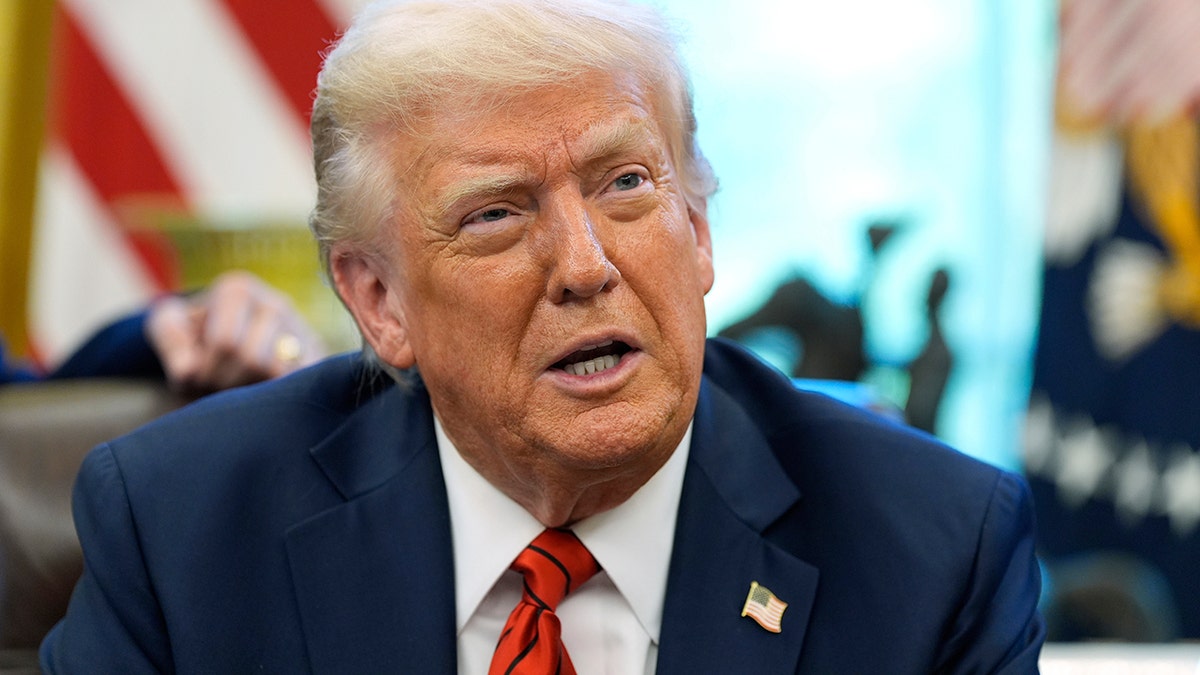
President Donald Trump speaks as he signs executive orders in the Oval Office of the White House, April 17, 2025, in Washington. (AP Photo/Alex Brandon)
White House press secretary Karoline Leavitt told the media in March that the White House considered the Signal group chat leak case «closed» while continuing to offer support to Waltz, whose office allegedly mistakenly added the journalist to the chat.
THIRD TOP PENTAGON AIDE COLIN CARROLL ON ADMINISTRATIVE LEAVE OVER LEAKS PROBE
«As the president has made it very clear, Mike Waltz continues to be an important part of his national security team,» Leavitt told the media in brief remarks during a gaggle outside of the White House’s press room March 31. «And this case has been closed here at the White House, as far as we are concerned.»
«There have been steps made to ensure that something like that can obviously never happen again,» she continued. «And we’re moving forward. And the president and Mike Waltz and his entire national security team have been working together very well, if you look at how much safer the United States of America is because of the leadership of this team.»
PENTAGON DEPUTY CHIEF OF STAFF IS SECOND HEGSETH ADVISOR REMOVED AMID DOD LEAK PROBE
Reports of a second Signal chat involving Hegseth follows highly publicized departures at the Pentagon last week following leaks.
Top aides to Hegseth were placed on leave and escorted out of the building as the Pentagon probed unauthorized leaks: Senior Advisor Dan Caldwell, Deputy Chief of Staff Darin Selnick and Colin Carroll, chief of staff to Deputy Secretary of Defense Stephen Feinberg.

U.S. National Security Adviser Mike Waltz and Secretary of Defense Pete Hegseth stand, as U.S. President Donald Trump (not pictured) meets French President Emmanuel Macron (not pictured), at the White House in Washington, D.C., Feb. 24, 2025. (Reuters/Brian Snyder)
On Friday evening, those three employees were fired, two defense officials confirmed to Fox News Digital, along with Chief of Staff Joe Kasper.
Another press aide, John Ullyot, parted ways with the Pentagon because he did not want to be second-in-command of the communications shop.
Officials denied that the three men were placed on leave because of their foreign policy views and said they saw no connection to their positions on Iran and Israel — even as reports surfaced that President Donald Trump told Israeli Prime Minister Benjamin Netanyahu the Pentagon would not intervene if Israel attacked Iran.
Ullyot notably published a scathing opinion piece in Politco Sunday predicting Hegseth would not remain as secretary of defense.
CLICK HERE TO GET THE FOX NEWS APP
«It’s been a month of total chaos at the Pentagon,» he wrote. «From leaks of sensitive operational plans to mass firings, the dysfunction is now a major distraction for the president — who deserves better from his senior leadership.»
«President Donald Trump has a strong record of holding his top officials to account,» he wrote. «Given that, it’s hard to see Defense Secretary Pete Hegseth remaining in his role for much longer.»
Secretary of Defense,Pete Hegseth,Donald Trump,Trump’s First 100 Days
INTERNACIONAL
Ante la corrupción en el Ejército, el régimen de Xi Jinping recurre a la propaganda para contener la descomposición interna

El Ejército Popular de Liberación (EPL) de China intensificó esta semana su campaña ideológica interna con la publicación de un editorial que insta a los cuadros políticos militares a “decir la verdad” y “enfrentar los problemas de frente”. El mensaje, difundido en el Diario del EPL, órgano oficial de las Fuerzas Armadas, forma parte de una estrategia propagandística que busca contener el desgaste institucional tras los múltiples escándalos de corrupción que han sacudido a la cúpula militar.
“El ocultamiento de los problemas o el maquillaje de la realidad reflejan un carácter partidario impuro y motivaciones egoístas”, advierte el texto, publicado sin firma individual, pero atribuido a un comentarista oficial del diario. El artículo exige a los funcionarios políticos del Ejército —encargados de aplicar la línea ideológica del Partido Comunista— actuar con “moralidad e integridad” en un contexto marcado por purgas internas, ausencia de información y la caída de varios altos mandos por corrupción.
Los cuadros, sostiene el editorial, deben ser “luchadores, no caballeros”, una formulación que refuerza la visión autoritaria del régimen sobre el papel del liderazgo militar. Se invoca además la figura de Mao Zedong y otros líderes revolucionarios para legitimar la necesidad de “predicar con el ejemplo” en medio de lo que el propio texto califica como “riesgos superpuestos” para el Ejército.
La publicación llega apenas dos días después de que la Comisión Militar Central (CMC), máximo órgano castrense de China, emitiera nuevas directrices para reconstruir la credibilidad de las Fuerzas Armadas. El documento, también difundido por el Diario del EPL, establece “líneas rojas políticas” y limitaciones en las interacciones sociales de los oficiales, con el objetivo explícito de frenar redes de favores y tráfico de influencias.

Aunque no se mencionan nombres, ambos textos aparecen en medio del silencio oficial sobre el paradero y la situación legal de figuras como el general He Weidong, uno de los oficiales de más alto rango que ha desaparecido del espacio público sin explicación. Tampoco se ha informado sobre las causas reales que llevaron a la caída de los dos últimos ministros de Defensa, reemplazados en medio de investigaciones internas cuya existencia no ha sido formalmente reconocida por las autoridades.
La falta de transparencia, sumada a la sustitución del debido proceso por campañas ideológicas, ha sido una constante en la gestión del Ejército bajo el liderazgo de Xi Jinping. En lugar de una rendición de cuentas abierta, el régimen ha optado por reforzar el control político mediante discursos de moral partidaria, publicaciones anónimas y referencias simbólicas a la historia del Partido.
La coincidencia entre el tono del editorial y las nuevas normas disciplinarias revela un patrón habitual en el sistema de propaganda del Partido Comunista Chino: el uso de medios oficiales para ejercer presión indirecta, consolidar el poder de la jerarquía política y silenciar cualquier forma de disidencia dentro del aparato militar.

Lejos de ser un gesto de reforma, el llamado a la “honradez” y a la “verdad” se produce en un entorno donde la verdad institucional se decide desde arriba, sin mecanismos independientes ni espacio para el escrutinio público. En ese contexto, las apelaciones a la lealtad, la disciplina y la “pureza ideológica” funcionan como herramientas de blindaje para un régimen que prioriza la estabilidad política frente a la rendición de cuentas.
(Con información de EFE)
INTERNACIONAL
ICE chief warns AI technology could lead to safety risks for agents: ‘Fringe organizations’
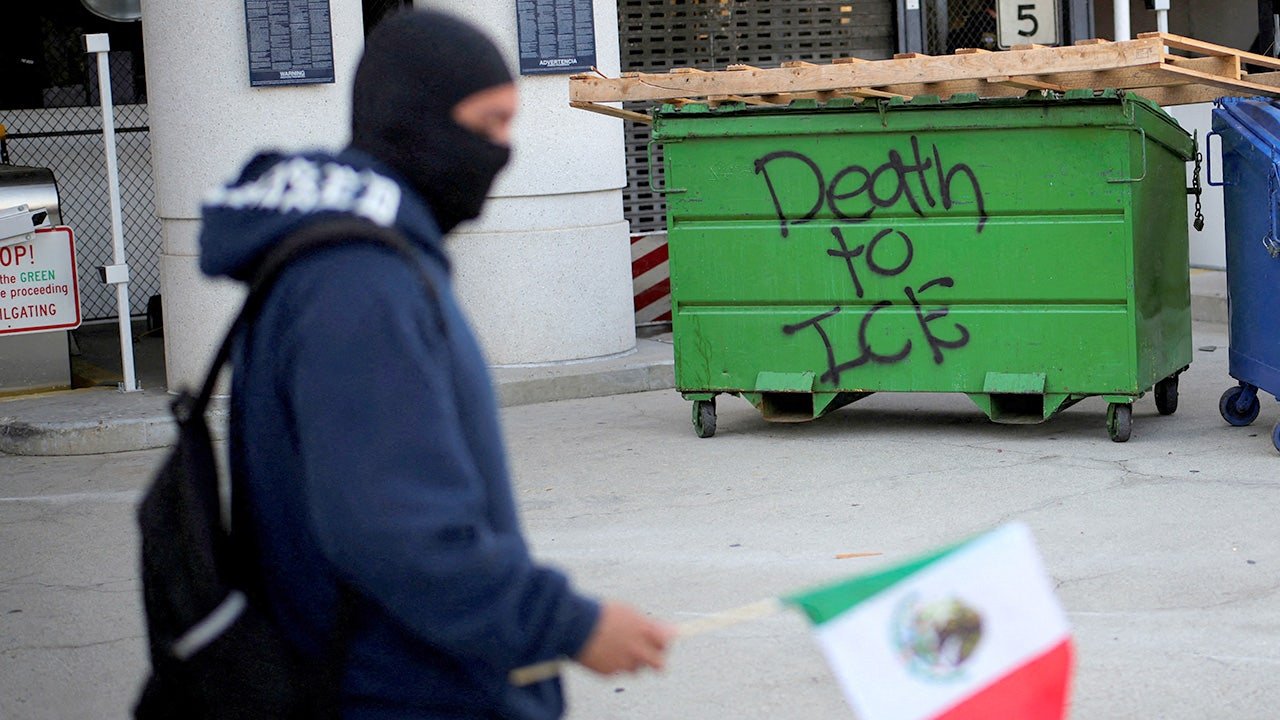
NEWYou can now listen to Fox News articles!
Far-left organizations could be using artificial intelligence and other technology to reveal the identity of Immigration and Customs Enforcement agents, acting ICE Director Todd Lyons told Fox News Digital in an interview.
Lyons’ remarks come as Democrats in Congress recently proposed the VISIBLE Act, which would require clear identification of ICE agents and prevent masking of federal immigration authorities in public-facing circumstances.
«If legislation passes to try to unmask ICE agents, they are not allowed to wear them, it runs the risk of agitators, different groups, you know, these fringe organizations using reverse technology, AI, to try to dox their families, try to get their identity, their home addresses,» Lyons said of the reaction from agents on the ground. «We’ve heard elected officials say there shouldn’t be any rest for ICE agents or their families.
«So they’re definitely concerned about that. They’re also concerned about their own well-being when they go out to effectuate these arrests because now we have to send more officers out into the communities because where we can send four or five to make arrests in the past, now we had to send up to eight or 10 just to protect the four that are making the arrests of one individual.»
MASSACHUSETTS BILL WOULD FORCE ICE AGENTS TO UNMASK
Residents surround federal and Border Patrol agents after an immigrant raid on Atlantic Boulevard in Bell, Calif., June 19, 2025. (Genaro Molina/Los Angeles Times via Getty Images)
He added that the safety risk does require more resources when conducting arrests. When ICE was conducting operations in Los Angeles in June, President Donald Trump sent in the California National Guard to the city with the goal of protecting agents and quelling riots. That move was legally challenged by California Gov. Gavin Newsom.
«The Marines are withdrawing. This is another win for Los Angeles,» Los Angeles Mayor Karen Bass posted to X Monday.
ICE agents have faced an 830% increase in assaults since last year, according to DHS. However, proponents of the VISIBLE Act have said it’s nessescary for accountability.
«For weeks, Americans have watched federal agents with no visible identification detain people off the streets and instill fear in communities across the country,» Sen. Cory Booker, D-New Jersey, said in a statement July 8.
«Reports of individuals impersonating ICE officers have only increased the risk to public and officer safety. The lack of visible identification and uniform standards for immigration enforcement officers has created confusion, stoked fear and undermined public trust in law enforcement.»
DHS FIRES BACK AT DEMOCRATS FOR ‘BEYOND THE PALE’ RHETORIC AS ICE AGENTS FACE WAVE OF VIOLENT THREATS
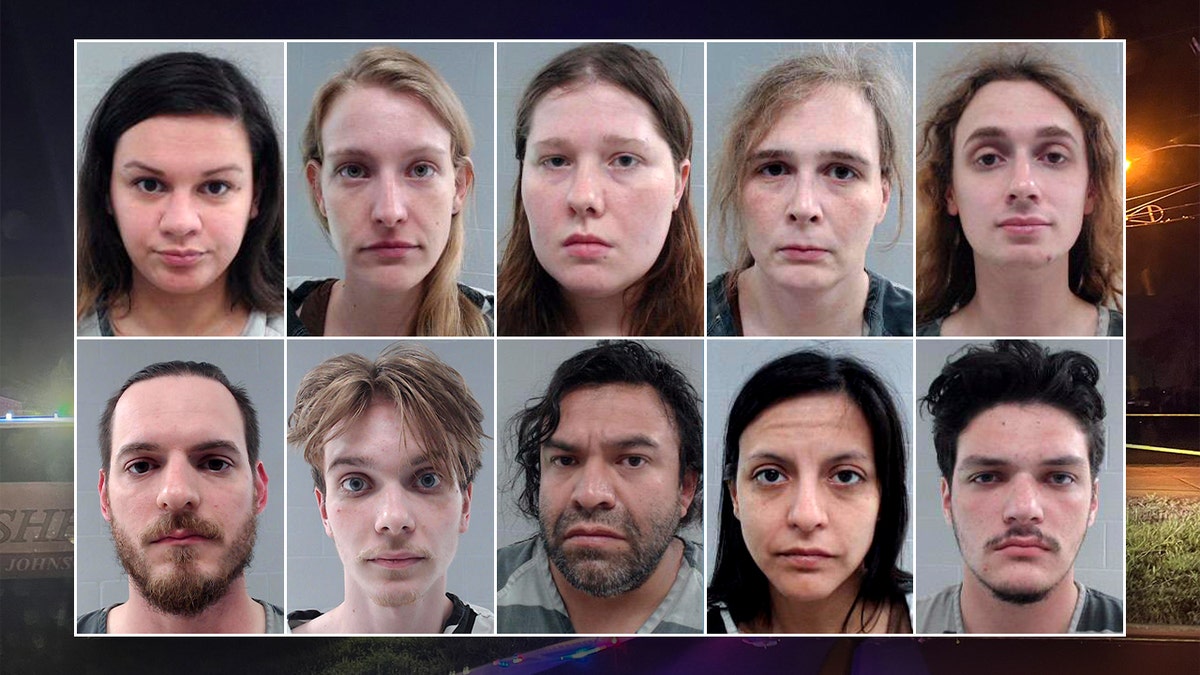
Ten suspects were charged with attempted murder of a federal officer in an alleged July 4, 2025, ambush attack on the Prairieland Detention Center in Alvarado, Texas. (Johnson County Sheriff’s Office)
«Assault could be anything from resisting arrest where they assault the officers, whether they’re kicking, grabbing officers. It could be something as dramatic as what we saw in Alvarado, Texas, where we had local police ambushed with firearms,» Lyons said.
«You saw it during the recent marijuana grow farm raid operation, where we had an individual firing a handgun at ICE officers, rocks thrown at them. It’s everything from verbal assault to physical assault to threats of bodily harm, deadly force. It’s run the whole gamut.»
Authorities have charged 12 people in an alleged anti-ICE attack at the Prairieland Detention Center on Independence Day, including ten for alleged attempted murder of federal officers and gun offenses. Reports have indicated that some planning occurred through a Signal group chat, and Lyons noted that this was likely planned by the Dallas area activists for some time.
CLICK HERE FOR MORE IMMIGRATION COVERAGE
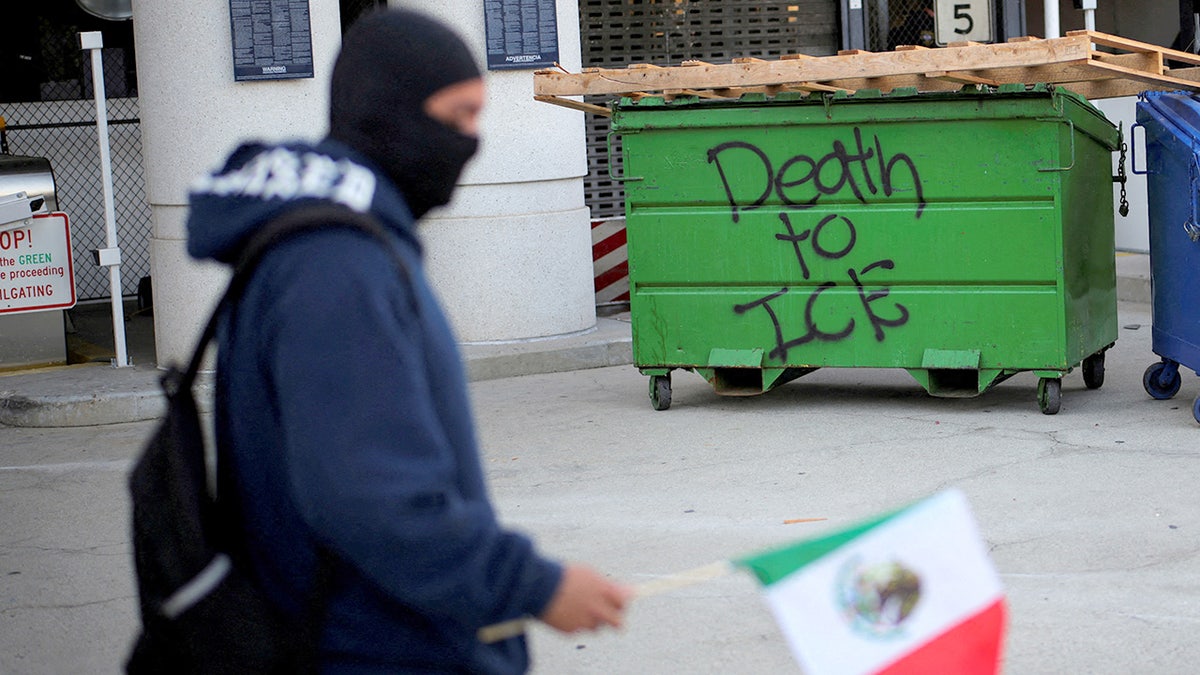
«Death to ICE» is written on a garbage cart after multiple detentions by Immigration and Customs Enforcement in downtown Los Angeles June 6, 2025. (Reuters/Daniel Cole)
«Well, the FBI is doing a great job investigating it as a whole organized event,» Lyons said. «So, you saw where it was actually organized with social media, where you have organized people in a typical L-shaped ambush where you had escape vehicles. So, without getting too much into what the Department of Justice and the FBI do, there is definitely evidence that this was planned for a while, and it wasn’t just a spur-of-the-moment protest. These were agitators focused on assaulting law enforcement officers and assaulting ICE.»
In terms of facing these coordinated efforts, the director said it’s a matter of planning and looking at the information available before conducting an operation.
ACTING ICE DIRECTOR CALLS MAYOR WU’S NEO-NAZI COMPARISON ‘DISGUSTING’ AMID INCREASE IN AGENT ASSAULTS

U.S. Immigration and Customs Enforcement agents look over lists of names and their hearing times and locations inside the Federal Plaza courthouse before making arrests June 27, 2025, in New York. (Bryan R. Smith/AFP via Getty Images)
«What we’re doing is definitely working with all of our federal partners as well as the state partners that do coordinate with us what we use and all the intelligence that we have at our disposal to go ahead and try to find out as much about these groups and as much as about these organizations and these planned events that we can to let our officers and agents know in the field prior to going out,» Lyons said.
CLICK HERE TO GET THE FOX NEWS APP
«So, we wanna make sure that officers are fully aware of what the situations they’re getting into, but we are also making sure that we’re properly staffed when we go out.»
In addition, he said recent funding from the «big, beautiful bill» would be to try to bring back personnel that «retired early» under the Biden administration and look at veterans and officials at the local and state levels who «already have the training» to «beef up» staffing at the agency.
INTERNACIONAL
Estados Unidos ordenó incautar un buque pesquero chino por esclavitud y violaciones a los derechos humanos: hasta hace un mes operó frente al Mar Argentino
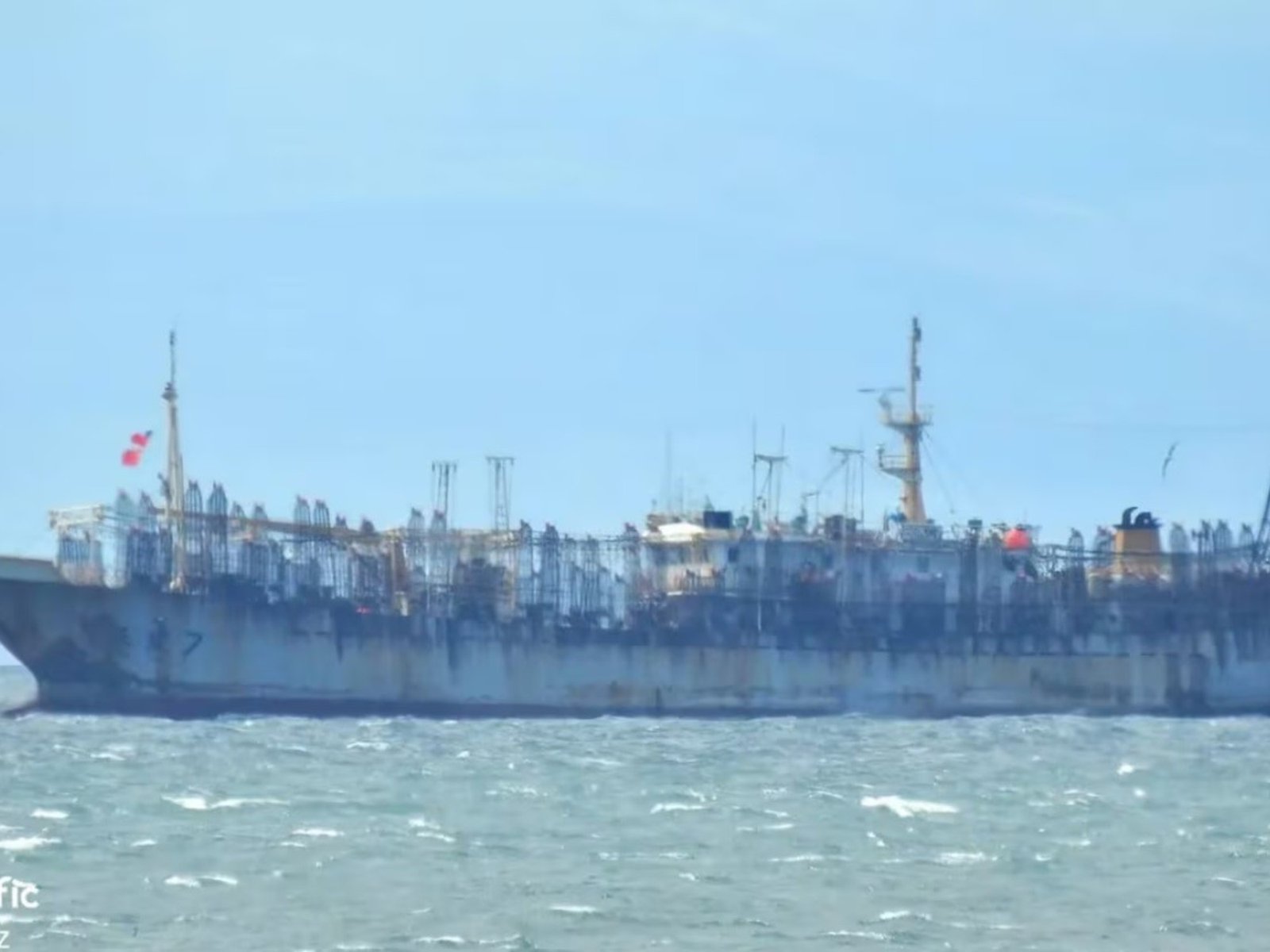
El gobierno de Estados Unidos ordenó la incautación de todos los productos de mar capturados por el buque pesquero Zhen Fa 7, de bandera china, por graves violaciones a los derechos humanos.
La embarcación, que operó hasta mediados de junio frente a la Patagonia argentina, fue acusada de prácticas que incluyen esclavitud, violencia sexual, condiciones laborales inhumanas y retención de documentos, según denunció el Departamento de Seguridad Nacional estadounidense.
La medida fue emitida por la Unidad de Aduanas y Protección Fronteriza (CBP), que basó su decisión en indicadores de trabajo forzoso identificados por la Organización Internacional del Trabajo (OIT). El caso fue difundido por el Círculo de Políticas Ambientales, una organización que monitorea la pesca ilegal en América del Sur.
«Zhen Fa 7 se benefició de menores costos laborales, produjo bienes por debajo del valor de mercado, perjudicó a las empresas estadounidenses y obtuvo ganancias injustamente», explicó el organismo en su resolución oficial publicada en su sitio web.
Durante más de una década, el buque operó en el Pacífico y Atlántico sur, con una fuerte presencia frente a las costas de Ecuador, Perú, Chile y Argentina. En su paso más reciente por Sudamérica, estuvo operativo frente al Mar Argentino hasta el 16 de junio de 2025 y utilizó el Puerto de Montevideo, Uruguay, como base logística.
No es la primera vez que el Zhen Fa 7 queda en la mira por abusos: en 2021 abandonó a un tripulante en estado crítico en Montevideo. El joven, de nacionalidad indonesia, falleció poco después en un hospital local. Las autoridades uruguayas nunca registraron oficialmente el ingreso del buque tanquero que lo desembarcó.
En marzo de este año, se detectó que el Zhen Fa 7 ingresó hasta 180 millas dentro de la Zona Económica Exclusiva (ZEE) argentina, aproximándose peligrosamente a las costas del Chubut, frente al Golfo San Jorge. Lo hizo acompañado por una flota de al menos 150 pesqueros chinos, bajo el argumento de buscar refugio por tormentas.
En enero, la provincia de Santa Cruz firmó un acuerdo con empresas pesqueras chinas, muchas de las cuales tienen antecedentes similares de abuso y pesca ilegal. El informe alerta que estas flotas operan gracias a subsidios estatales y explotación sistemática de sus tripulaciones.
La pesca ilegal, no declarada y no reglamentada (INDNR) tiene consecuencias devastadoras: afecta ecosistemas marinos, la actividad pesquera legal y también genera un impacto económico y social directo en los países ribereños. A pesar de eso, Argentina todavía no ratificó dos acuerdos internacionales clave (uno de la OMC y otro de la OMI) que podrían contribuir a ponerle freno a estos abusos, a pesar de haber sido aprobados por el Congreso.
Este martes, Argentina depositó su instrumento de ratificación del Acuerdo sobre Subvenciones a la Pesca de la Organización Mundial del Comercio, que busca limitar el accionar de las flotas que realizan pesca ilegal y no reglamentada en los mares del mundo. Había sido aprobado por el Congreso en octubre del año pasado.
Se trata de un acuerdo fundamental para luchar contra la depredación pesquera que ocurre en el Atlántico Sur, ya que impacta directamente en el financiamiento estatal que recibe la flota extranjera que realiza pesca destructiva, ilegal y no reglamentada.
El acuerdo, que demandó más de 20 años de negociación, constituye uno de los principales logros alcanzados en la OMC desde su creación, puesto que por primera vez se establece la restricción de los subsidios que afectan negativamente al comercio y a la conservación de los recursos pesqueros y se prohíbe las subvenciones que contribuyen a la pesca ilegal, no declarada y no reglamentada (INDNR), a la pesca de poblaciones ya sobreexplotadas y a la pesca en alta mar no reglamentada.
Según había anunciado el Gobierno argentino en octubre pasado, el acuerdo tiene implicancias de enorme relevancia para el país, dado su gran litoral marítimo y la importancia de los recursos pesqueros..
En particular, se espera que contribuya a disminuir la presión pesquera en el área adyacente a la Zona Económica Exclusiva Argentina, coloquialmente referida como «milla 201», ya que al limitar la posibilidad de que los países recurran a subsidios para mantener artificialmente la actividad de sus flotas, el acuerdo contribuirá a la protección de los recursos pesqueros en las aguas adyacentes a la jurisdicción nacional, limitará las capacidades de grandes flotas que pescan a distancia y complementará los esfuerzos de patrullaje de las autoridades nacionales sobre el terreno.
Con la aprobación del Congreso, el Gobierno estará ya en condiciones de sumarse a los más de 80 países que han presentado a la OMC su instrumento de ratificación.
China,Estados Unidos,pesca ilegal,Derechos Humanos,Últimas Noticias

 POLITICA2 días ago
POLITICA2 días agoExpulsada del Gobierno, Victoria Villarruel empieza a tomar distancia, pero no tiene proyecto político para este año

 POLITICA2 días ago
POLITICA2 días agoLa CGT evalúa adelantar a octubre el recambio de sus autoridades y define una movilización contra Milei

 POLITICA1 día ago
POLITICA1 día ago🗳️ El chamuyo de las elecciones en la Provincia: se postulan, pero no a asumen





